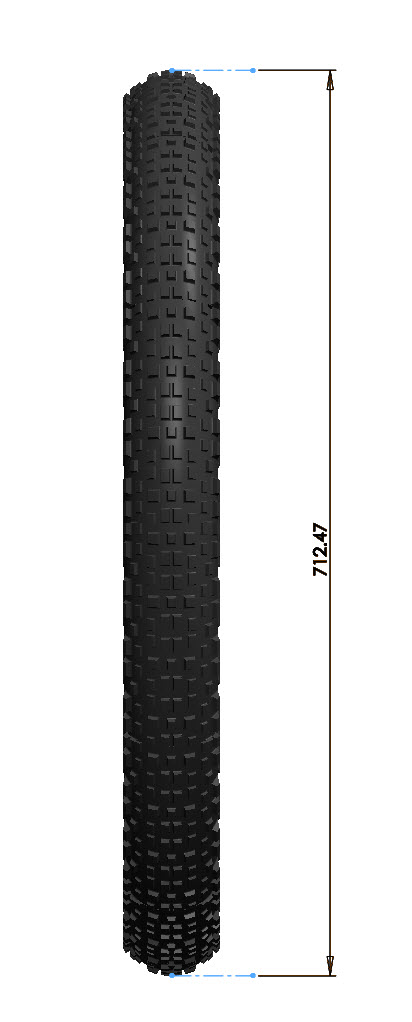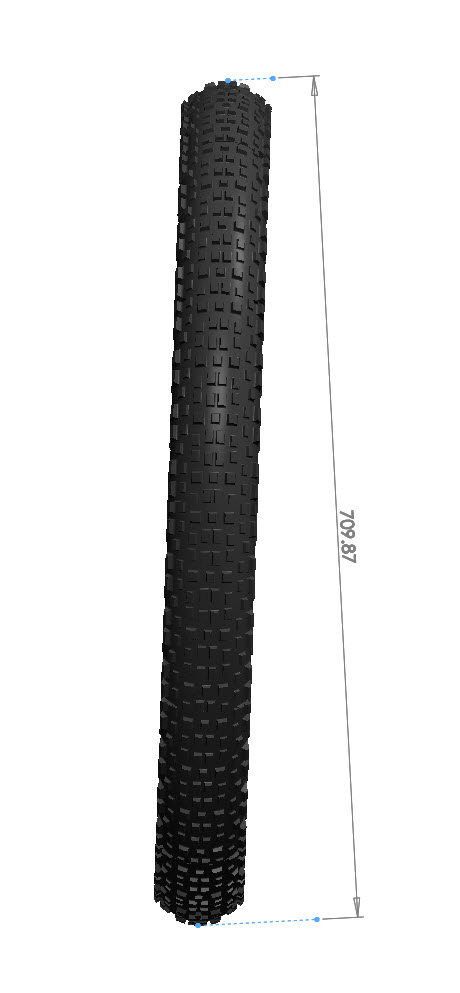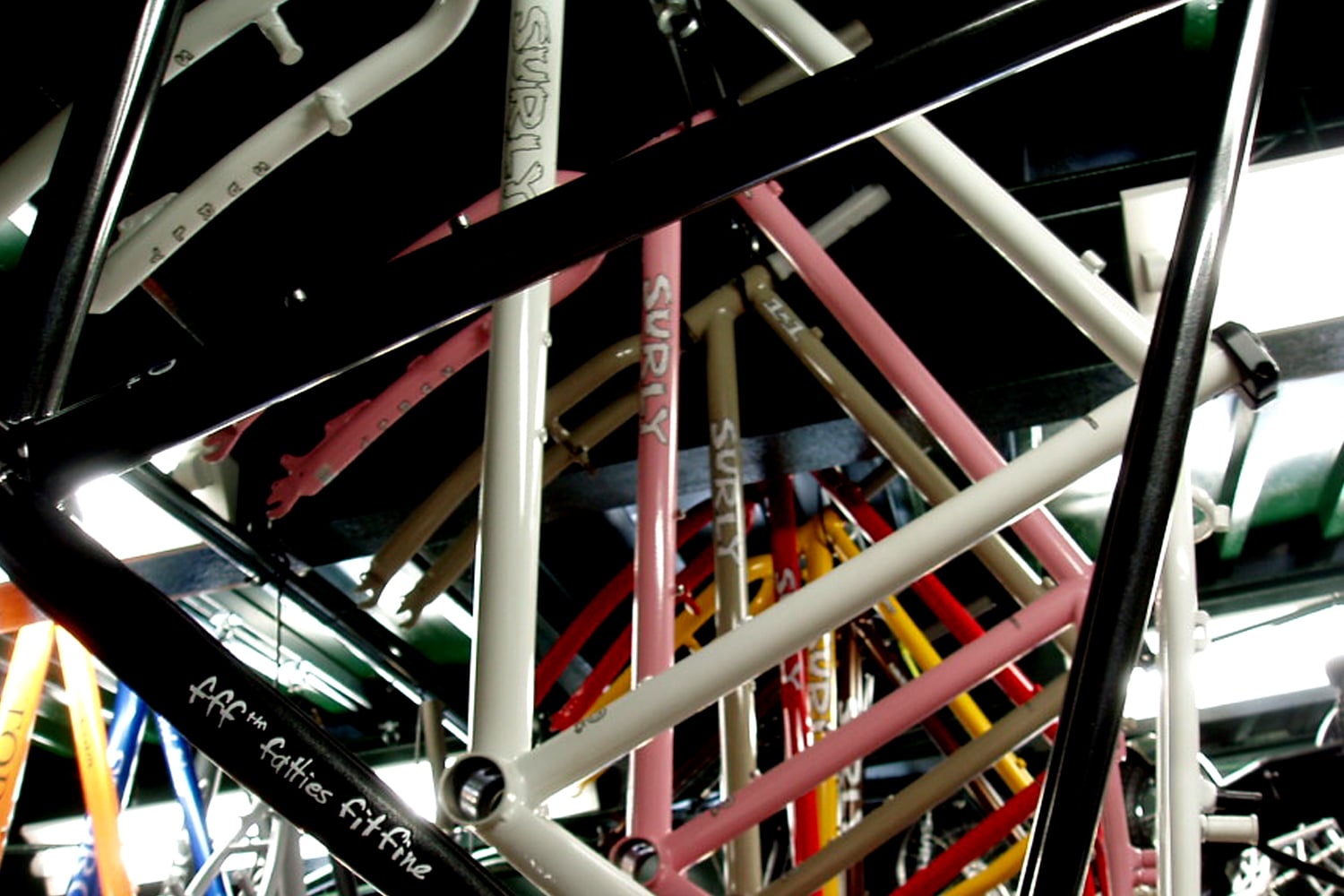Does my new Dirt Wizard 27.5+ fit in my Pike?
Can I run a Knard 4.8” on a Marge Lite in my Pug fork?
What’s the biggest Surly tire I can fit in my 1 x 1?
Sound familiar? Hell, some of you readers have probably emailed/called us with a similar question. Maybe you knew this but we have a tire geometry chart somewhat inconveniently tucked back in the dungeons of surlybikes.com. Chances are you could draw some simple diagrams and figure out if tire “x” fits in frame/fork “y” with the numbers found on the website, but nobody really wants to do that, and we honestly have been slow to update the chart. I’m here to tell you that we released a new and improved version of this chart. Why?? The short answer is that some of our numbers were not as accurate as we liked and we want to add all the new tires that have come out in the last year.
Why are the numbers more accurate now? That is a bit longer of an explanation – read below if you’re interested. If not, then watch this
- Accounting for tire Stretch – It doesn’t take a rocket scientist to know that tires stretch, we engineers call this “deformation”. Deformation in polymers and rubbers is hard to predict, but the moral of the story is that they do stretch. If you measure a tire immediately after inflation it will measure differently than if you let it sit and stretch. We’ve determined that 24 hours is enough time to let a tire stretch to its’ maximum size, so we re-measured everything after letting it sit for a day.
- Measuring a group of tires– Plain and simple, variance is a reality of manufacturing. There may be an abnormality or some flash left over from molding on one tire, or on one spot in a tire. For this reason we measured 3 of each tire/rim combination and in multiple locations on each tire. This gave us a more accurate average of a certain tire model on a certain rim.
- Measuring tires at maximum PSI – This one is pretty easy to understand and if you’ve played around with fat tires I’m guessing you’ve observed it. A tire at max PSI is not the same size as a tire at low pressure. Originally we measured tires at what we considered riding pressure but tire pressure is a pretty subjective topic and everyone’s preference is different. In order to maintain uniformity in our process, and since some people want to run their tires at max PSI, we re-measured all tires at maximum pressure listed on the casing.
- Measuring with a fixture – Have you ever tried to use a tape measure to measure OD of a tire? I have, and it’s not very consistent or accurate (note: our previous method was more involved than this). Ever used a height gauge and tried to hold a tire completely vertical? It’s more accurate, but still pretty difficult. The best way to get an accurate/repeatable process is to build a fixture to make sure you’re doing it the same every time. We ended up building a fixture and developing a more accurate process and re-measured each tire/rim combination. Below is a little infographic showing how a slight variance from vertical can lead to a pretty innacurate measurement.


The tire on the top shows the OD of a 26” Knard tire measured correctly. The tire on the bottom shows the OD of a 26” Knard at a 5 degree angle from vertical. The difference in OD is right around 3mm. This may not seem like a lot, but if you combine that with the first 3 topics listed you can get a measurement that is innacurate.
We are always working towards continuous improvement and as the Omni bike market has grown we’ve become even more aware of the value this chart holds. We want to put out the best numbers for consumers, shops, and custom builders and we are confident this process yields the best accuracy that we are currently capable of. Continue to look to this chart for legacy, current, and new tires as they become available.
Special thanks to Ben, KK and the rest of the guys in QC for your help in getting this very involved project done, you know who you are.
About Slippers Cortez
Well hello there, meet Ben, aka Slippers Cortez. Ben is one of the Engineers here at Surly. When Ben isn’t doing bike math and drawings, he’s likely enjoying a beer and playing the mandolin with his brothers in their folk/bluegrass band, The Thirsty River. If you don’t know what a mandolin is, there’s a google for that. If you meet Ben, you’ll notice that he’s the most Minnesotan person you know. We mean that in the best of ways of course. So the next time you're straddling your Surly, think of Ben, because he just might be thinking about you too.
 Surly Bikes
Surly Bikes
